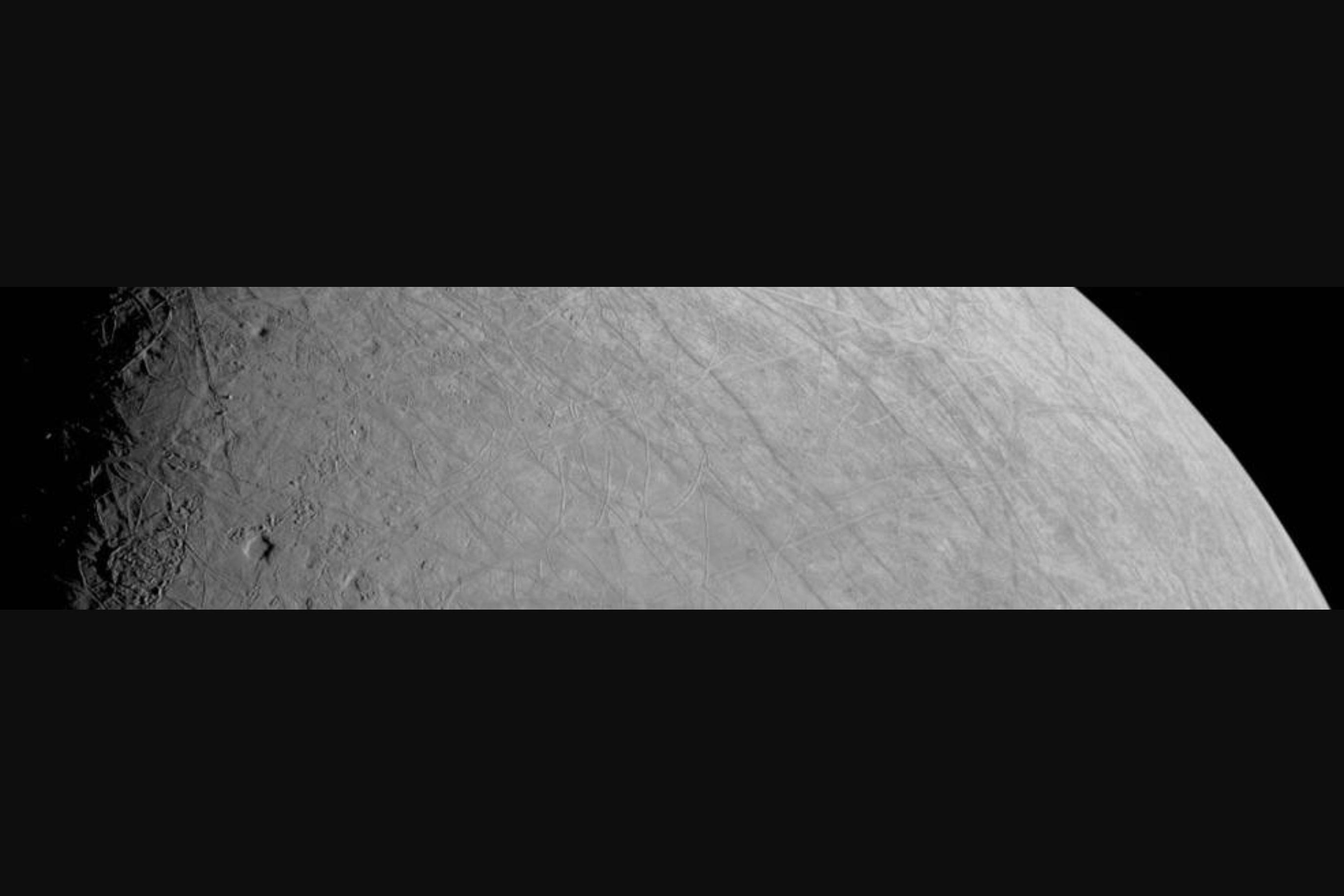Behold! Our closest view of Jupiter's ocean moon Europa in 22 years
Europa is the sixth-largest moon in the solar system and hosts a huge ocean beneath its icy shell.

NASA's Jupiter-gazing spacecraft just got a rare closeup of an icy world.
The Juno probe made the closest pass in 22 years of Jupiter's icy moon Europa on Thursday (Sept. 29), providing the best view of the ocean world since the NASA's Galileo spacecraft flew by it 2000.
Skimming just 219 miles (352 kilometers) above Europe's surface, the two-hour flyby was among the three closest-ever glimpses of the icy world. The last similar view that we received was on Jan. 3, 2000 with Galileo, officials with NASA's Jet Propulsion Laboratory (JPL) in Southern California said in a statement.
"Rugged terrain features are easily seen, including tall shadow-casting blocks, while bright and dark ridges and troughs curve across the surface. The oblong pit near the terminator might be a degraded impact crater," JPL officials wrote of Juno's flyby imagery on Thursday (Sept. 29).
Video: NASA unveils most amazing view of Jupiter's moon Europa ever
While geology data from the flyby is just starting to come in, officials termed Juno's rare look as key to establishing observations for NASA's coming Europa Clipper mission, which will launch in just two years to study the icy moon.
"Europa Clipper will study the moon's atmosphere, surface, and interior, with its main science goal being to determine whether there are places below Europa's surface that could support life," JPL stated of the mission, which is scheduled to reach the Jupiter system in 2030.
Get the Space.com Newsletter
Breaking space news, the latest updates on rocket launches, skywatching events and more!


As the sixth-largest moon in the solar system, Europa is similar in size to Earth's moon but has a much different formation and evolutionary history. Europa has a massive icy crust overlying an ocean that researchers think may be capable of supporting Earth-like life.
During its flyby, Juno collected some of the highest-ever resolution pictures of the moon at 0.6 miles or 1 km per pixel, JPL stated, along with information about the moon's environment, atmosphere, surface and interior structure.
In pictures: Chaos reigns in detailed views of Jupiter's icy moon Europa
"The science team will be ... looking to see if Europa's surface features have changed over the past two decades," said Candy Hansen, a Juno co-investigator who leads planning for JunoCam (which obtained the images) at the Planetary Science Institute in Tucson, Arizona.
Data from Juno's microwave radiometer instrument could be especially important for future missions such as Clipper, as it may help identify some potentially habitable "pockets" of liquid water just underneath the massive ice cap.
Scientists used the flyby to change Juno's trajectory slightly, as it now is slated to make a single orbit of Jupiter in 38 Earth days (compared with the previous 43.) Flybys of the volcanic Jovian moon Io are expected in 2023 and 2024, if the mission can continue surviving the intense radiation radiation belts near Jupiter.
Follow Elizabeth Howell on Twitter @howellspace. Follow us on Twitter @Spacedotcom or Facebook.
Join our Space Forums to keep talking space on the latest missions, night sky and more! And if you have a news tip, correction or comment, let us know at: community@space.com.

Elizabeth Howell (she/her), Ph.D., was a staff writer in the spaceflight channel between 2022 and 2024 specializing in Canadian space news. She was contributing writer for Space.com for 10 years from 2012 to 2024. Elizabeth's reporting includes multiple exclusives with the White House, leading world coverage about a lost-and-found space tomato on the International Space Station, witnessing five human spaceflight launches on two continents, flying parabolic, working inside a spacesuit, and participating in a simulated Mars mission. Her latest book, "Why Am I Taller?" (ECW Press, 2022) is co-written with astronaut Dave Williams.
